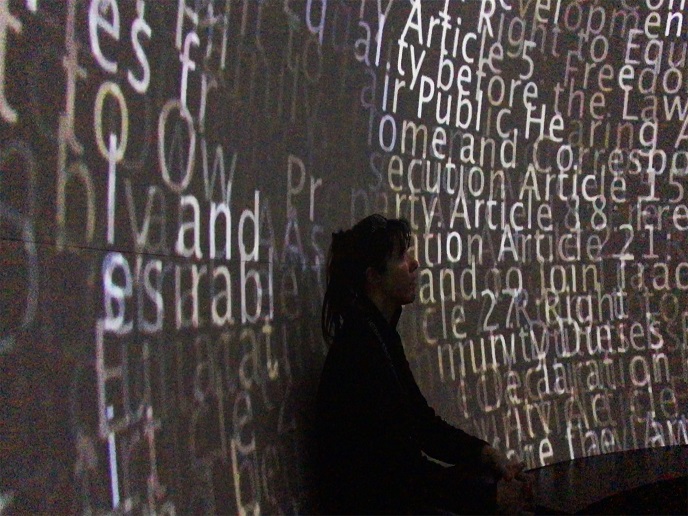Interactive art is about to become far more accessible
“The main way in which these installations or performances are currently retrieved from the (already scarce) digital collections is based on … title and author, or year of production, and keywords alike,” says Dr Federica Bressan, DaphNet(opens in new window) project fellow. Information on the technological setup and user interaction is not searchable because it is not stored in a machine-processable way. A language is needed that allows semantic operations to be performed, to talk about the modes of interaction. Theoretical reflection “The challenge,” Dr Bressan explains, “is to build a taxonomy of modes of interaction that can be used to describe interactive works in a satisfactory way.” To ultimately render something searchable, which at present is difficult to even archive, first requires a methodological base and working model. Several means exist to measure interaction, but it is not yet clear which one is suitable for the goal of archiving and retrieval. “During DaphNet I had to find a workable definition of concepts like interaction, agency, causality, intelligence, and of course: meaning,” Dr Bressan reveals. She views this theoretical reflection as the project’s most valuable contribution. With respect to the field of heritage, the project contributes to the preservation of interactive installations and artistic performances. As for economic impact, searchable data is definitely a prerequisite for further exploiting the asset represented by those data. Project work also included a gender dimension. “My genuine interest in women’s perspective on the world of art and science motivated me to integrate gender analysis at macro, meso and micro levels throughout the project cycle.” Dr Bressan is a member of the Gender Equality and Diversity for Mobile Researchers in Science(opens in new window) (GEMS) Working Group and Women Being(opens in new window). She has published a detailed report on the challenge of integrating gender analysis in gender non-related research(opens in new window), detailing also the experience of an interdisciplinary project on multimedia cultural heritage. Practical reflection The MSCA grant afforded Dr Bressan significant personal and professional development. “During this fellowship I have learnt that people are at the centre of every meaningful endeavour: whatever you do is teamwork.” It seems the fellow was attuned to this from the outset. Case in point: the project’s very name. “DaphNet is the union of the words Daphne and Network. Daphne refers to the Greek myth, while Network refers to the network of artists and organisations that is the backbone of the project and a precious resource for my research.” Dr Bressan will keep expanding her interests with a Fulbright grant (2020), that will mark “an American adventure, which is — academically speaking — unexplored territory for me.” Technoculture Dr Bressan continues to advance and share knowledge on the topics treated during DaphNet through her Technoculture podcast(opens in new window), where she interviews international experts who “have something interesting to say about the interconnection between technology and culture today.” The significance of this activity is best expressed in her own words: “Technoculture explores how digital technology influences our lives, our experiences, and ultimately what it means to be human today.” The first season will wrap up with the 33rd episode in July 2019, and Dr Bressan is currently working on the second season that will kick off in late 2019.







